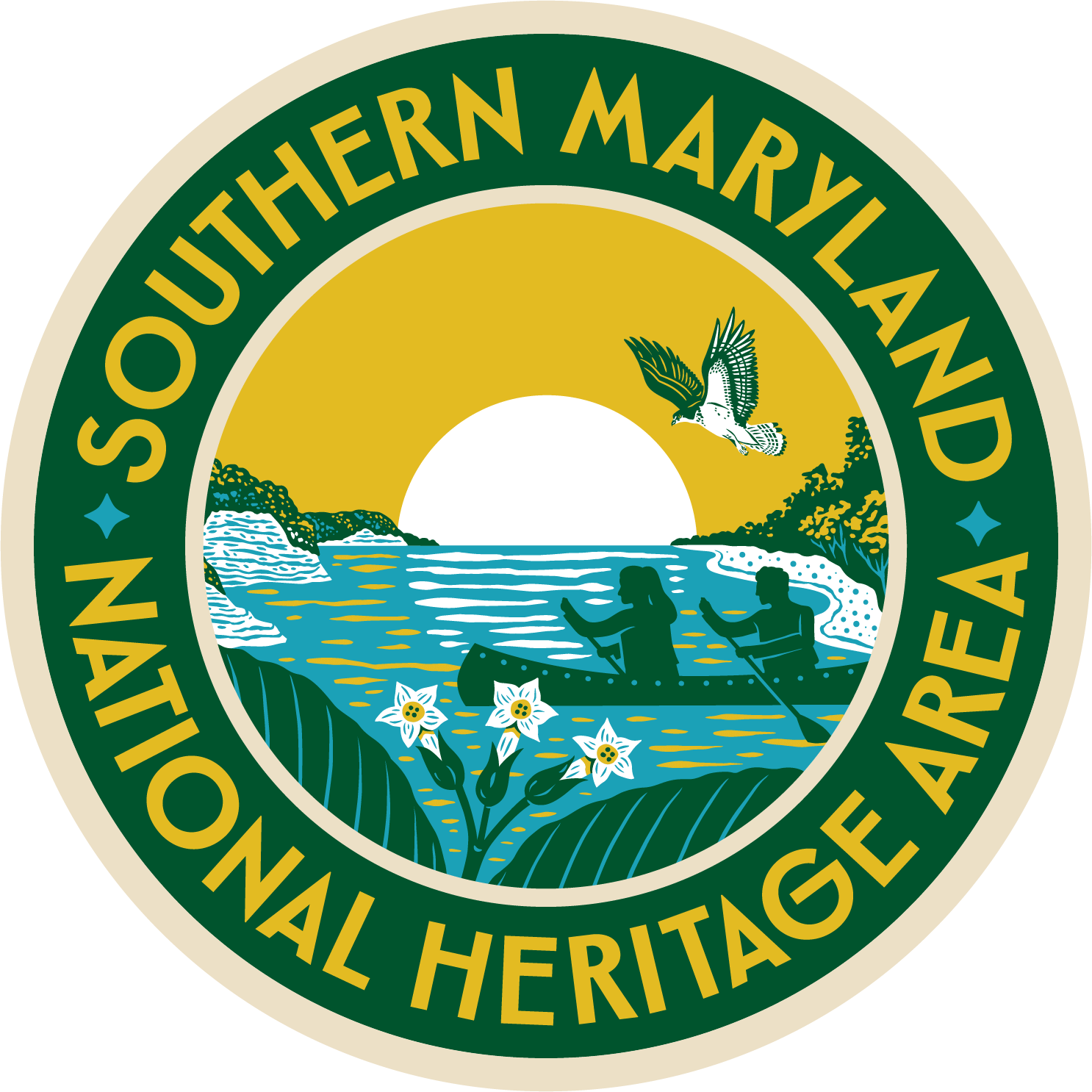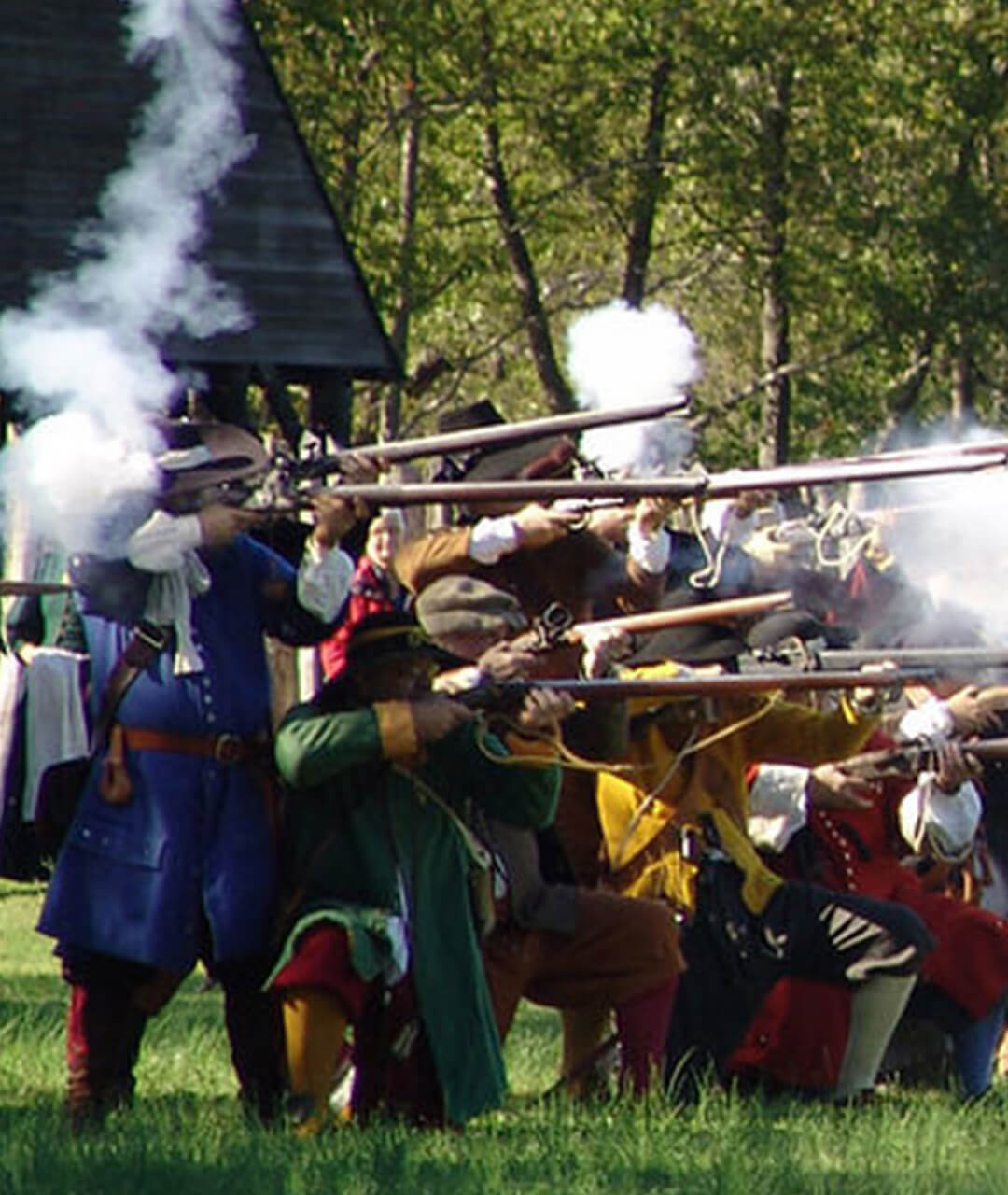
War Comes to
Southern Maryland
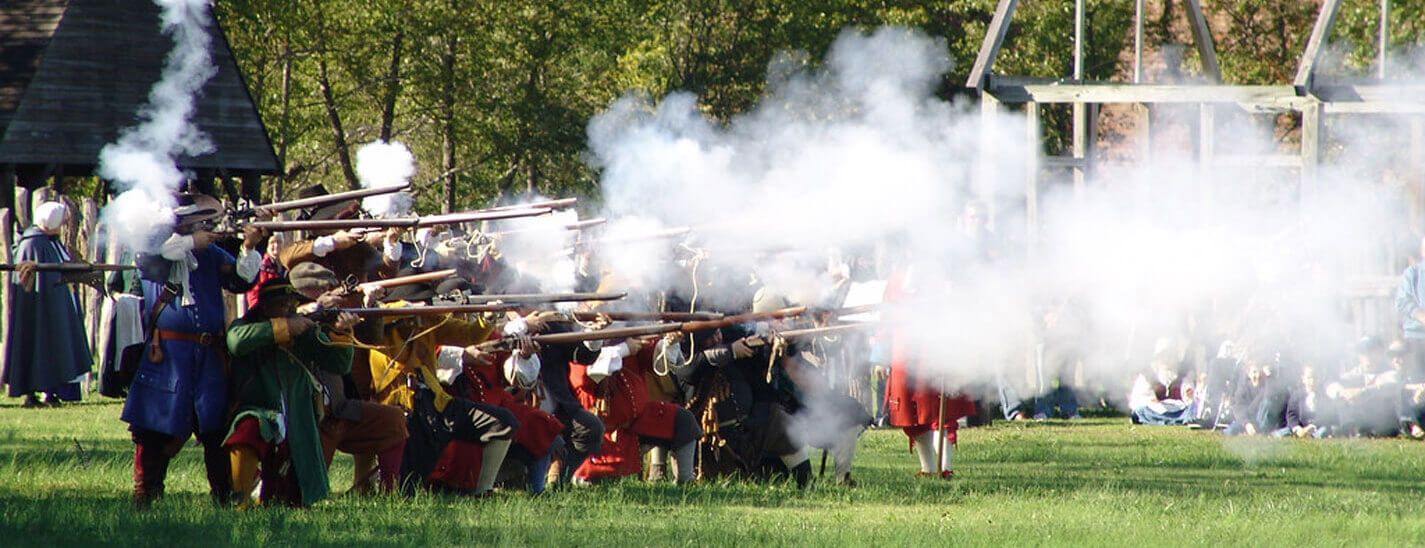
War Comes to Southern Maryland
Southern Maryland was one of the most affected regions of the country during the War of 1812 between the United States and Great Britain, which lasted from 1812a
Southern Maryland was one of the most affected regions of the country during the War of 1812 between the United States and Great Britain, which lasted from 1812 to 1815. The active British presence in Southern Maryland, the capital’s first line of defense, resulted in destruction and disruption of daily life for the citizens of Calvert, Charles, and St. Mary’s counties.
This was not the only war to affect the region. Southern Maryland was greatly affected by the American Revolution, the War of 1812, the Civil War, World War I and World War II.
Southern Maryland is home to the Ghost Fleet of Mallows Bay, a newly designated National Marine Sanctuary that contains the remains of ships from World War I (along with earlier vessels all the way back to the Revolutionary War). Now designated as the Mallows Bay Potomac River National Marine Sanctuary, this is the first marine sanctuary in 20 years to be designated, only one of 14 marine sanctuaries in the United States, and the first sanctuary on the Chesapeake Bay. Come kayak or just gaze from the shore!
This region is also a center of innovation, with the Patuxent River Naval Air Station at the forefront of research, development and testing, as well as a training ground for astronauts. To learn more, visit the dynamic Patuxent River Naval Air Museum and Visitor’s Center.
The largest engagement of forces during the Revolutionary War in all of Maryland was in Southern Maryland at St. George Island/Piney Point. You can visit where British forces attempted to invade the mainland in 1776 and were repulsed by Maryland’s “Flying Camp” militia. While visiting, you can also tour the oldest lighthouse on the Potomac. For more information visit St. Mary’s County Parks & Recreation Museums Division.
During almost the entire period of the American Revolution, the British Navy controlled the waters of the Chesapeake. Trade became a high-risk activity and because of Southern Maryland’s accessibility, surrounded and intersected by the waters of the Potomac and Patuxent rivers and the Chesapeake Bay, vessels made easy prey for British ships.
The region contributed not only supplies but also people, who fought numerous battles including the “Battle of Long Island” in 1776. This battle was not fought in Southern Maryland but included numerous men from the region. The Maryland 400 were members of the 1st Maryland Regiment who repeatedly charged a numerically superior British force during the Battle of Long Island, sustaining heavy casualties, but allowing General Washington to successfully evacuate the bulk of his troops to Manhattan. This action is commemorated in Maryland’s nickname, the “Old Line State.”
to 1815. The active British presence in Southern Maryland, the capital’s first line of defense, resulted in destruction and disruption of daily life for the citizens of Calvert, Charles, and St. Mary’s counties.
This was not the only war to affect the region. Southern Maryland was greatly affected by the American Revolution, the War of 1812, the Civil War, World War I and World War II.
Southern Maryland is home to the Ghost Fleet of Mallows Bay, a newly designated National Marine Sanctuary that contains the remains of ships from World War I (along with earlier vessels all the way back to the Revolutionary War). Now designated as the Mallows Bay Potomac River National Marine Sanctuary, this is the first marine sanctuary in 20 years to be designated, only one of 14 marine sanctuaries in the United States, and the first sanctuary on the Chesapeake Bay. Come kayak or just gaze from the shore!
This region is also a center of innovation, with the Patuxent River Naval Air Station at the forefront of research, development and testing, as well as a training ground for astronauts. To learn more, visit the dynamic Patuxent River Naval Air Museum and Visitor’s Center.
The largest engagement of forces during the Revolutionary War in all of Maryland was in Southern Maryland at St. George Island/Piney Point. You can visit where British forces attempted to invade the mainland in 1776 and were repulsed by Maryland’s “Flying Camp” militia. While visiting, you can also tour the oldest lighthouse on the Potomac. For more information visit St. Mary’s County Parks & Recreation Museums Division.
During almost the entire period of the American Revolution, the British Navy controlled the waters of the Chesapeake. Trade became a high-risk activity and because of Southern Maryland’s accessibility, surrounded and intersected by the waters of the Potomac and Patuxent rivers and the Chesapeake Bay, vessels made easy prey for British ships.
The region contributed not only supplies but also people, who fought numerous battles including the “Battle of Long Island” in 1776. This battle was not fought in Southern Maryland but included numerous men from the region. The Maryland 400 were members of the 1st Maryland Regiment who repeatedly charged a numerically superior British force during the Battle of Long Island, sustaining heavy casualties, but allowing General Washington to successfully evacuate the bulk of his troops to Manhattan. This action is commemorated in Maryland’s nickname, the “Old Line State.”
Southern Maryland was one of the most affected regions of the country during the War of 1812 between the United States and Great Britain, which lasted from 1812 to 1815. The active British presence in Southern Maryland, the capital’s first line of defense, resulted in destruction and disruption of daily life for the citizens of Calvert, Charles, and St. Mary’s counties.
This was not the only war to affect the region. Southern Maryland was greatly affected by the American Revolution, the War of 1812, the Civil War, World War I and World War II.
Southern Maryland is home to the Ghost Fleet of Mallows Bay, a newly designated National Marine Sanctuary that contains the remains of ships from World War I (along with earlier vessels all the way back to the Revolutionary War). Now designated as the Mallows Bay Potomac River National Marine Sanctuary, this is the first marine sanctuary in 20 years to be designated, only one of 14 marine sanctuaries in the United States, and the first sanctuary on the Chesapeake Bay. Come kayak or just gaze from the shore!
This region is also a center of innovation, with the Patuxent River Naval Air Station at the forefront of research, development and testing, as well as a training ground for astronauts. To learn more, visit the dynamic Patuxent River Naval Air Museum and Visitor’s Center.
The largest engagement of forces during the Revolutionary War in all of Maryland was in Southern Maryland at St. George Island/Piney Point. You can visit where British forces attempted to invade the mainland in 1776 and were repulsed by Maryland’s “Flying Camp” militia. While visiting, you can also tour the oldest lighthouse on the Potomac. For more information visit St. Mary’s County Parks & Recreation Museums Division.
During almost the entire period of the American Revolution, the British Navy controlled the waters of the Chesapeake. Trade became a high-risk activity and because of Southern Maryland’s accessibility, surrounded and intersected by the waters of the Potomac and Patuxent rivers and the Chesapeake Bay, vessels made easy prey for British ships.
The region contributed not only supplies but also people, who fought numerous battles including the “Battle of Long Island” in 1776. This battle was not fought in Southern Maryland but included numerous men from the region. The Maryland 400 were members of the 1st Maryland Regiment who repeatedly charged a numerically superior British force during the Battle of Long Island, sustaining heavy casualties, but allowing General Washington to successfully evacuate the bulk of his troops to Manhattan. This action is commemorated in Maryland’s nickname, the “Old Line State.”
The American Revolution
The largest engagement of forces during the Revolutionary War in all of Maryland was in Southern Maryland at St. George Island/Piney Point. You can visit where British forces attempted to invade the mainland in 1776 and were repulsed by Maryland’s “Flying Camp” militia. While visiting, you can also tour the oldest lighthouse on the Potomac. For more information visit St. Mary’s County Parks & Recreation Museums Division.
During almost the entire period of the American Revolution, the British Navy controlled the waters of the Chesapeake. Trade became a high-risk activity and because of Southern Maryland’s accessibility, surrounded and intersected by the waters of the Potomac and Patuxent rivers and the Chesapeake Bay, vessels made easy prey for British ships.
The region contributed not only supplies but also people, who fought numerous battles including the “Battle of Long Island” in 1776. This battle was not fought in Southern Maryland but included numerous men from the region. The Maryland 400 were members of the 1st Maryland Regiment who repeatedly charged a numerically superior British force during the Battle of Long Island, sustaining heavy casualties, but allowing General Washington to successfully evacuate the bulk of his troops to Manhattan. This action is commemorated in Maryland’s nickname, the “Old Line State.”
The American Revolution
The largest engagement of forces during the Revolutionary War in all of Maryland was in Southern Maryland at St. George Island/Piney Point. You can visit where British forces attempted to invade the mainland in 1776 and were repulsed by Maryland’s “Flying Camp” militia. While visiting, you can also tour the oldest lighthouse on the Potomac. For more information visit St. Mary’s County Parks & Recreation Museums Division.
During almost the entire period of the American Revolution, the British Navy controlled the waters of the Chesapeake. Trade became a high-risk activity and because of Southern Maryland’s accessibility, surrounded and intersected by the waters of the Potomac and Patuxent rivers and the Chesapeake Bay, vessels made easy prey for British ships.
The region contributed not only supplies but also people, who fought numerous battles including the “Battle of Long Island” in 1776. This battle was not fought in Southern Maryland but included numerous men from the region. The Maryland 400 were members of the 1st Maryland Regiment who repeatedly charged a numerically superior British force during the Battle of Long Island, sustaining heavy casualties, but allowing General Washington to successfully evacuate the bulk of his troops to Manhattan. This action is commemorated in Maryland’s nickname, the “Old Line State.”
You can visit sites of the era, including the home of a signer of the Declaration of Independence:
You can visit sites of the era, including the home of a signer of the Declaration of Independence:
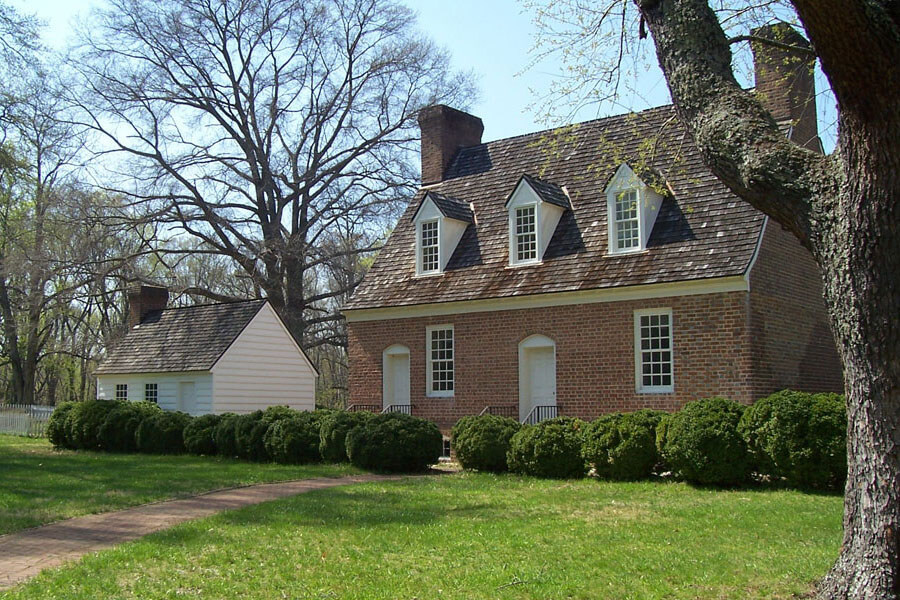
Circa 1732-1792.
The Smallwood Retreat House, originally known as Mattawoman Plantation, was the home of American Revolutionary War General William Smallwood, until his death in 1792. During the Revolutionary War, General Smallwood, a two-star general, was the highest-ranking military man from the State of Maryland. No stranger to positions of leadership, he served three one-year terms as the Governor of Maryland beginning in 1785. A lifelong bachelor, Smallwood was a gentleman farmer, who made a sizeable fortune farming tobacco in Southern Maryland.
Circa 1732-1792.
The Smallwood Retreat House, originally known as Mattawoman Plantation, was the home of American Revolutionary War General William Smallwood, until his death in 1792. During the Revolutionary War, General Smallwood, a two-star general, was the highest-ranking military man from the State of Maryland. No stranger to positions of leadership, he served three one-year terms as the Governor of Maryland beginning in 1785. A lifelong bachelor, Smallwood was a gentleman farmer, who made a sizeable fortune farming tobacco in Southern Maryland.
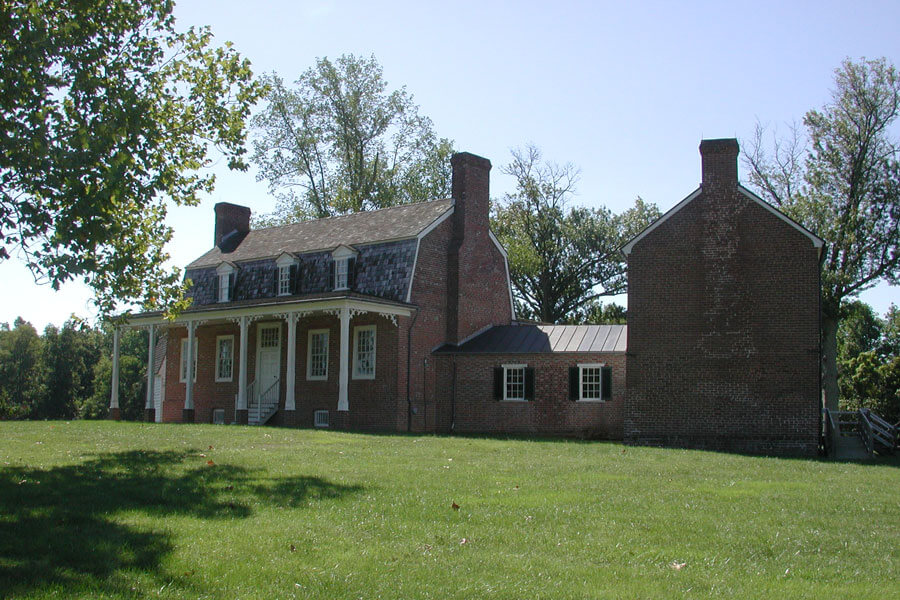
Circa 1771.
Prior to the Revolutionary War, Thomas Stone led a very comfortable life as a planter and lawyer. After realizing war with Great Britain was inevitable, he risked everything he held dear– life, fortune, and honor– to safeguard rights of the new United States of America. To that end, Thomas Stone became one of 56 men to sign one of the most important documents in world history: The Declaration of Independence. This is a National Park Service site, with a beautifully preserved house and grounds.
Circa 1771.
Prior to the Revolutionary War, Thomas Stone led a very comfortable life as a planter and lawyer. After realizing war with Great Britain was inevitable, he risked everything he held dear– life, fortune, and honor– to safeguard rights of the new United States of America. To that end, Thomas Stone became one of 56 men to sign one of the most important documents in world history: The Declaration of Independence. This is a National Park Service site, with a beautifully preserved house and grounds.

Circa 1836.
The largest Revolutionary War engagement in the state of Maryland was at Piney Point/St. George Island in 1776. The lighthouse at Piney Point began in operation in 1836, and during the Civil War was the site of a federal gunboat attack against the Confederates. The lighthouse functioned until 1964, when it was replaced by a lighted buouy.
Circa 1836.
The largest Revolutionary War engagement in the state of Maryland was at Piney Point/St. George Island in 1776. The lighthouse at Piney Point began in operation in 1836, and during the Civil War was the site of a federal gunboat attack against the Confederates. The lighthouse functioned until 1964, when it was replaced by a lighted buouy.
War of 1812
The most famous events of the War of 1812 occurred in the Chesapeake Bay area. In 1814, the defeat of Napoleon in Europe allowed Great Britain to take a more aggressive strategy in the American war. Noting the strategic importance of the Chesapeake, the British blockaded the bay and began raiding American towns. In August of 1814, a force of 4,500 British regulars under Major General John Ross was transported up the Chesapeake and into the Patuxent River, where they landed in Benedict Maryland and went on to rout the American army at Bladensburg, and to burn Washington, D.C.
In response to British raids, the Chesapeake Bay Flotilla was created. The flotilla was in reality a squadron of small and hastily constructed gunboats, or barges, that were fitted with two or three cannons. These barges were much smaller than the British vessels, and so they were able to travel in and out of the shallow waters in the Chesapeake Bay and were successful in their attempts to harass the British Fleet, delaying British advances up the Patuxent river for three months in the summer of 1814. In the end, however, the British army attacked the flotilla from land, and the British fleet continued to push up the Chesapeake Bay and marched on Washington D. C. The Royal Marines burned the White House, the Capitol, and many other government offices to the ground. It is the only time in American History since the Revolutionary War, that the United States’ capital has been invaded.
The most famous events of the War of 1812 occurred in the Chesapeake Bay area. In 1814, the defeat of Napoleon in Europe allowed Great Britain to take a more aggressive strategy in the American war. Noting the strategic importance of the Chesapeake, the British blockaded the bay and began raiding American towns. In August of 1814, a force of 4,500 British regulars under Major General John Ross was transported up the Chesapeake and into the Patuxent River, where they landed in Benedict Maryland and went on to rout the American army at Bladensburg, and to burn Washington, D.C.
In response to British raids, the Chesapeake Bay Flotilla was created. The flotilla was in reality a squadron of small and hastily constructed gunboats, or barges, that were fitting with two or three cannons. These barges were much smaller than the British vessels, and so they were able to travel in and out of the shallow waters in the Chesapeake Bay and were successful in their attempts to harass the British Fleet, delaying British advances up the Patuxent river for three months in the summer of 1814. In the end, however, the British army attacked the flotilla from land, and the British fleet continued to push up the Chesapeake Bay and marched on Washington D. C. The Royal Marines burned the White House, the Capitol, and many other government offices to the ground. It is the only time in American History since the Revolutionary War, that the United States’ capital has been invaded.
These are just a few of the historic sites commemorating the American War for Independence. Other sites will be added as the 250th anniversary of the United States of America draws closer.
These are just a few of the historic sites commemorating the American War for Independence. Other sites will be added as the 250th anniversary of the United States of America draws closer.
War of 1812
The most famous events of the War of 1812 occurred in the Chesapeake Bay area. In 1814, the defeat of Napoleon in Europe allowed Great Britain to take a more aggressive strategy in the American war. Noting the strategic importance of the Chesapeake, the British blockaded the bay and began raiding American towns. In August of 1814, a force of 4,500 British regulars under Major General John Ross was transported up the Chesapeake and into the Patuxent River, where they landed in Benedict Maryland and went on to rout the American army at Bladensburg, and to burn Washington, D.C.
In response to British raids, the Chesapeake Bay Flotilla was created. The flotilla was in reality a squadron of small and hastily constructed gunboats, or barges, that were fitted with two or three cannons. These barges were much smaller than the British vessels, and so they were able to travel in and out of the shallow waters in the Chesapeake Bay and were successful in their attempts to harass the British Fleet, delaying British advances up the Patuxent river for three months in the summer of 1814. In the end, however, the British army attacked the flotilla from land, and the British fleet continued to push up the Chesapeake Bay and marched on Washington D. C. The Royal Marines burned the White House, the Capitol, and many other government offices to the ground. It is the only time in American History since the Revolutionary War, that the United States’ capital has been invaded.
The Battle of St. Leonard’s Creek
and the Chesapeake Bay Flotilla
The British fleet under the command of Rear Admiral George Cockburn had received little in the way of opposition during 1813 and was able to conduct raids from tidewater Virginia to the northern end of the bay. When the bulk of his small fleet retired at the end of the year to winter in Bermuda, Commodore Joshua Barney and Secretary of the Navy William Jones were given a small window of opportunity to construct a defense.
“I am therefore of opinion the only defense we have in our power, is a Kind of Barge or Row-galley, so constructed, as to draw a small draft of water, to carry Oars, light sails, and One heavy long gun” wrote Barney in July of 1813. It was a “mosquito fleet” of eighteen vessels that hindered the British advance on Baltimore and Washington the following summer.
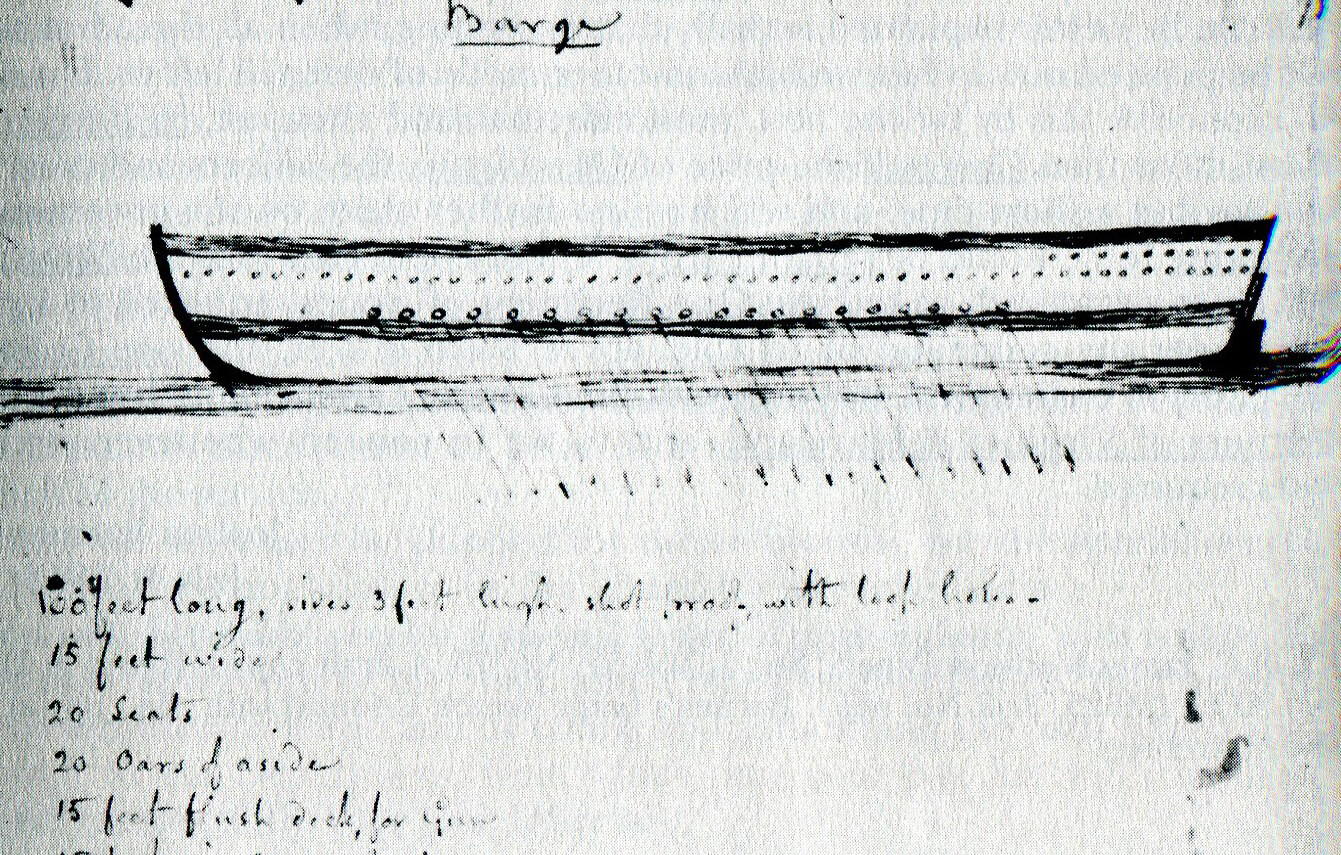
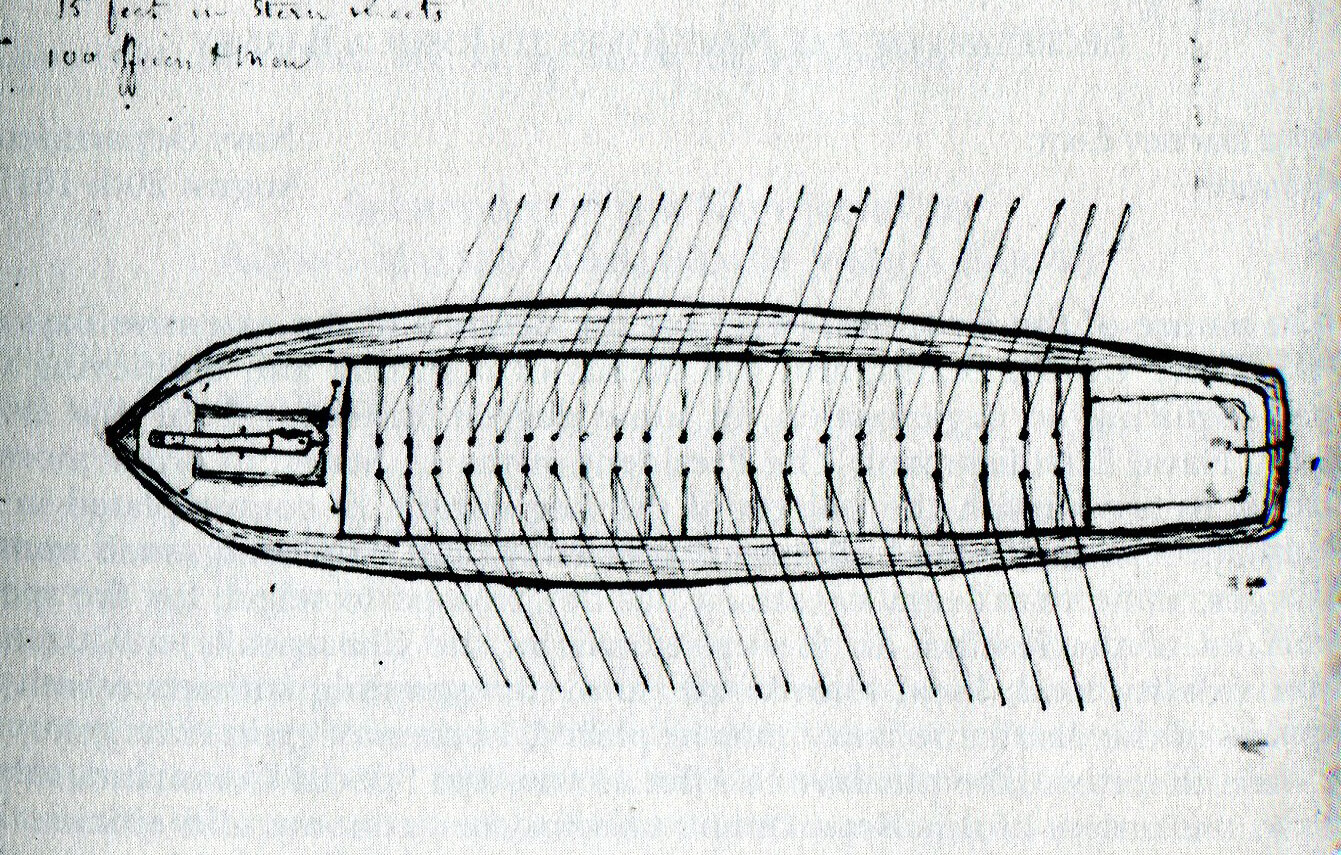
The British fleet vastly overpowered Barney’s squadron; but Barney could retreat to shallow rivers where Cockburn’s frigates could not follow. Additionally, his ships were skillfully manned by experienced seamen who were all volunteers. After a brief engagement off Cedar Point, this Chesapeake Flotilla retreated up the Patuxent to St. Leonard’s creek. Cockburn could not allow Barney’s fleet to harass his operation, so he sent a detachment comprised of a 74-gun frigate, a brig-sloop, and a number of his own gunships to blockade the entrance of the Creek. On June 9th, 1814 some fifteen British barges attempted to force Barney out of his hiding spot and into the range of the 74-gun frigate. The ploy didn’t work, as the first few British barges to come within range of Barney’s guns quickly retreated back to the mouth of the creek. The next day, the British flotilla returned in force but were met with a heavy barrage. In the pursuit, Barney managed to ground the 18-gun schooner St. Lawrence.
With his initial attempts to destroy the flotilla frustrated, Admiral Cockburn settled on blockading the creek and raiding the surrounding countryside to deprive Barney of much-needed local support. The flotilla had to move quickly or disband to avoid capture. A quickly built battery commanded by Colonel Wadsworth allowed Barney’s men to force their way out of the creek on June 27th. Though he admitted “our shot was terrible” and Wadsworth commented that he had difficulty setting the battery up in time, the combined barrage commanded by the two men was enough to allow the flotilla to escape up the Patuxent with only a few gunboats lost.
Ultimately though, Barney’s flotilla was forced to disband. Towards the end of August, the British army received reinforcements and presented a greater threat to the flotilla men from the shore. In addition, Barney was under pressure from the Secretary of the Navy, who knew that reinforcing the flotilla would draw strength away from defending Baltimore and Washington. And so Barney opted to blow up his flotilla. For nearly three months, he and his men had prevented Cockburn from making the sweeping advances he had enjoyed in 1813, forcing him to expend time and effort that allowed Baltimore to mount a successful defense. Once disbanded, many of the flotilla men joined American forces defending Washington D.C. on land and were among the last to lose their position at the Battle of Bladensburg on August 24th. Barney survived the war to become a decorated naval hero.

The British fleet vastly overpowered Barney’s squadron; but Barney could retreat to shallow rivers where Cockburn’s frigates could not follow. Additionally, his ships were skillfully manned by experienced seamen who were all volunteers. After a brief engagement off Cedar Point, this Chesapeake Flotilla retreated up the Patuxent to St. Leonard’s creek. Cockburn could not allow Barney’s fleet to harass his operation, so he sent a detachment comprised of a 74-gun frigate, a brig-sloop, and a number of his own gunships to blockade the entrance of the Creek. On June 9th, 1814 some fifteen British barges attempted to force Barney out of his hiding spot and into the range of the 74-gun frigate. The ploy didn’t work, as the first few British barges to come within range of Barney’s guns quickly retreated back to the mouth of the creek. The next day, the British flotilla returned in force but were met with a heavy barrage. In the pursuit, Barney managed to ground the 18-gun schooner St. Lawrence.
With his initial attempts to destroy the flotilla frustrated, Admiral Cockburn settled on blockading the creek and raiding the surrounding countryside to deprive Barney of much-needed local support. The flotilla had to move quickly or disband to avoid capture. A quickly built battery commanded by Colonel Wadsworth allowed Barney’s men to force their way out of the creek on June 27th. Though he admitted “our shot was terrible” and Wadsworth commented that he had difficulty setting the battery up in time, the combined barrage commanded by the two men was enough to allow the flotilla to escape up the Patuxent with only a few gunboats lost.
Ultimately though, Barney’s flotilla was forced to disband. Towards the end of August, the British army received reinforcements and presented a greater threat to the flotilla men from the shore. In addition, Barney was under pressure from the Secretary of the Navy, who knew that reinforcing the flotilla would draw strength away from defending Baltimore and Washington. And so Barney opted to blow up his flotilla. For nearly three months, he and his men had prevented Cockburn from making the sweeping advances he had enjoyed in 1813, forcing him to expend time and effort that allowed Baltimore to mount a successful defense. Once disbanded, many of the flotilla men joined American forces defending Washington D.C. on land and were among the last to lose their position at the Battle of Bladensburg on August 24th. Barney survived the war to become a decorated naval hero.

Explore this history and the sites of engagement along the Star-Spangled Banner National Historic Trail:
Explore this history and the sites of engagement along the Star-Spangled Banner National Historic Trail.
American Civil War
Maryland is often termed the “Crossroads of the Civil War” and this is particularly true in Southern Maryland. The region, as with the nation, was in conflict with itself, and held Confederate sympathizers as well as a training ground for African American soldiers who fought for the Union.
Southern Maryland is also where the assassin John Wilkes Booth fled after killing President Abraham Lincoln. Follow the path and sites of this escape here.
Maryland is often termed the “Crossroads of the Civil War” and this is particularly true in Southern Maryland. The region, as with the nation, was in conflict with itself, and held Confederate sympathizers as well as a training ground for African American soldiers who fought for the Union.
Southern Maryland is also where the assassin John Wilkes Booth fled after killing President Abraham Lincoln. Follow the path and sites of this escape here.
Civil War sites to visit in Southern Maryland include:
Civil War sites to visit in Southern Maryland include:
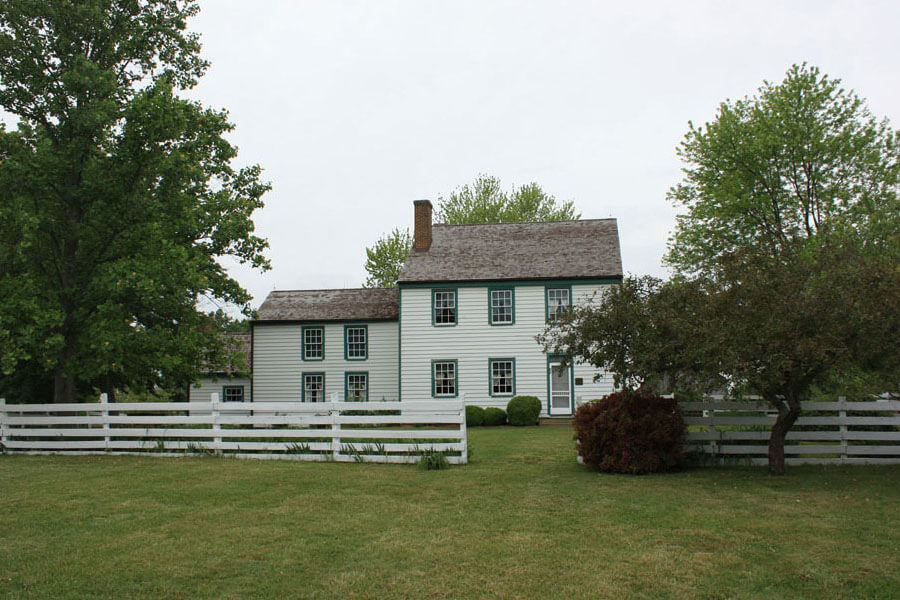
John Wilkes Booth stopped here on his flight from justice after assassinating President Abraham Lincoln. Dr. Mudd treated Booth, setting his broken leg. History continues to debate Dr. Mudd’s role in the plot to kill Lincoln: some say he was part of the conspiracy; others claim he was an innocent caught up in Booth’s plan. Visit the museum and decide for yourself. Many of the costumed tour leaders are direct descendants of Dr. Mudd.
John Wilkes Booth stopped here on his flight from justice after assassinating President Abraham Lincoln. Dr. Mudd treated Booth, setting his broken leg. History continues to debate Dr. Mudd’s role in the plot to kill Lincoln: some say he was part of the conspiracy; others claim he was an innocent caught up in Booth’s plan. Visit the museum and decide for yourself. Many of the costumed tour leaders are direct descendants of Dr. Mudd.
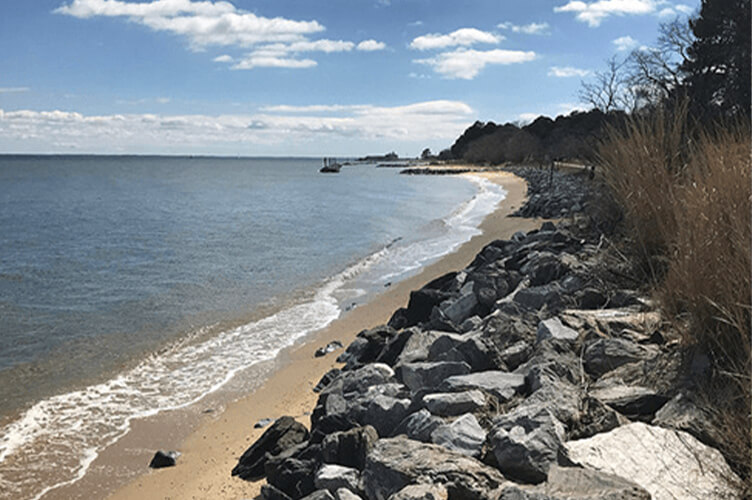
More than 50,000 Confederate prisoners were held at Point Lookout prison camp, many of whom died due to the harsh conditions, or drowned in futile attempts to escape by swimming the mouth of the Potomac River to Virginia. This was also the site of the Union’s Hammond Hospital. Interestingly, Point Lookout is now considered by many to be one of the most haunted places in America. Visit the museum on the site to learn more.
More than 50,000 Confederate prisoners were held at Point Lookout prison camp, many of whom died due to the harsh conditions, or drowned in futile attempts to escape by swimming the mouth of the Potomac River to Virginia. This was also the site of the Union’s Hammond Hospital. Interestingly, Point Lookout is now considered by many to be one of the most haunted places in America. Visit the museum on the site to learn more.

John Wilkes Booth stopped here on his flight from justice after assassinating President Abraham Lincoln. Dr. Mudd treated Booth, setting his broken leg. History continues to debate Dr. Mudd’s role in the plot to kill Lincoln: some say he was part of the conspiracy; others claim he was an innocent caught up in Booth’s plan. Visit the museum and decide for yourself. Many of the costumed tour leaders are direct descendants of Dr. Mudd.

More than 50,000 Confederate prisoners were held at Point Lookout prison camp, many of whom died due to the harsh conditions, or drowned in futile attempts to escape by swimming the mouth of the Potomac River to Virginia. This was also the site of the Union’s Hammond Hospital. Interestingly, Point Lookout is now considered by many to be one of the most haunted places in America. Visit the museum on the site to learn more.
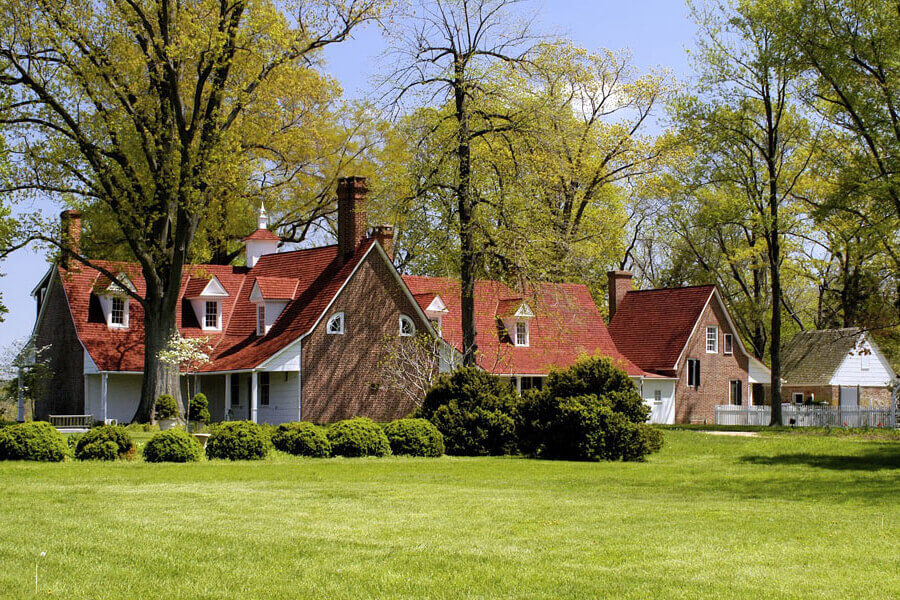
Dating from the early 18th century, this former tobacco plantation was dependent on slaves. One original slave cabin, dating from the 1830’s survives. The interpretive program at historic Sotterley incorporates the Civil War Era and includes the story of the Kane Family’s time when they were enslaved at Historic Sotterley. The Kane family is one of the stories told as an element of the Descendants Project at Historic Sotterley. Sotterley has been designated as a part of the UNESCO slave route project.
Dating from the early 18th century, this former tobacco plantation was dependent on slaves. One original slave cabin, dating from the 1830’s survives. The interpretive program at historic Sotterley incorporates the Civil War Era and includes the story of the Kane Family’s time when they were enslaved at Historic Sotterley. The Kane family is one of the stories told as an element of the Descendants Project at Historic Sotterley. Sotterley has been designated as a part of the UNESCO slave route project.
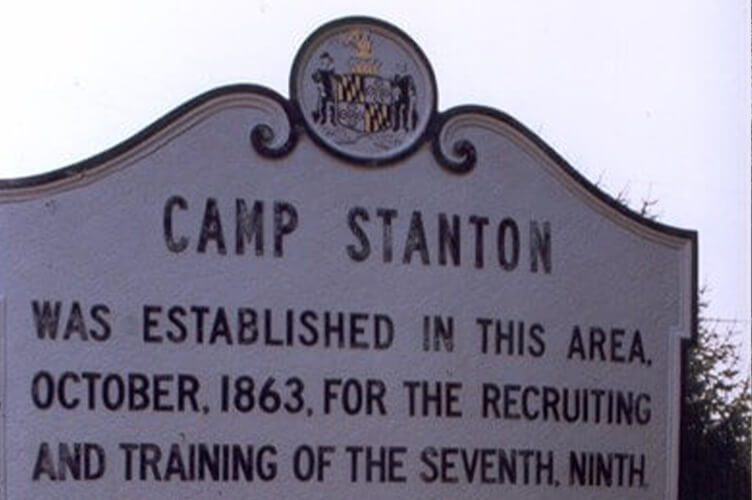
This former Union encampment was established in 1863 for the recruitment and training of black soldiers, some who had recently escaped enslavement. In August 1863, Camp Stanton was established in Benedict, MD, for the purposes of recruiting and training African American men for the Union Army. The 7th, 9th, 19th and 30th Colored Infantries were formed and trained at Camp Stanton. Existing muster and bounty rolls for the 7th Regiment reveal name, former owner, date of enrollment and the place of origin for the soldiers. The site is now owned by the Maryland Department of Resources and consists of a historical marker and fields.
This former Union encampment was established in 1863 for the recruitment and training of black soldiers, some who had recently escaped enslavement. In August 1863, Camp Stanton was established in Benedict, MD, for the purposes of recruiting and training African American men for the Union Army. The 7th, 9th, 19th and 30th Colored Infantries were formed and trained at Camp Stanton. Existing muster and bounty rolls for the 7th Regiment reveal name, former owner, date of enrollment and the place of origin for the soldiers. The site is now owned by the Maryland Department of Resources and consists of a historical marker and fields.
Wars of the 20th and 21st Centuries
Southern Maryland has been on the cutting edge of modern weaponry and technology. From serving as the site for training and weapons testing to serving as the site where warships are put to rest, and with soldiers going to war from every county in the region, Southern Maryland has been engaged in all modern wars. The region has two museums that explore these histories, and the continued innovation that marks this region, as well as the first National Marine Sanctuary on the Chesapeake Bay which is the resting place of ships from the Revolution to World War I.
Southern Maryland has been on the cutting edge of modern weaponry and technology. From serving as the site for training and weapons testing to serving as the site where warships are put to rest, and with soldiers going to war from every county in the region, Southern Maryland has been engaged in all modern wars. The region has two museums that explore these histories, and the continued innovation that marks this region, as well as the first National Marine Sanctuary on the Chesapeake Bay which is the resting place of ships from the Revolution to World War I.
Below are places of interest for the wars of the 20th and 21st centuries.
Below are places of interest for the wars of the 20th and 21st centuries.

The mission of the Maryland Veterans Museum at Patriot Park is to recognize and honor all U.S. Military Veterans. Those who fought on the battlefields and those who served in support of them should be remembered and honored so that future generations never forget the sacrifices these men and women have made.
The mission of the Maryland Veterans Museum at Patriot Park is to recognize and honor all U.S. Military Veterans. Those who fought on the battlefields and those who served in support of them should be remembered and honored so that future generations never forget the sacrifices these men and women have made.

The Patuxent River Naval Air Museum (PRNAM) is a member-supported, privately-funded museum preserving the history and heritage of Naval Aviation and associated technology. First opened in 1978, the Patuxent River Naval Air Museum now spans three buildings and also includes a Flight Line consisting of one-of-a-kind aircraft and aircraft configurations unique to the Naval Test Center.
The Patuxent River Naval Air Museum (PRNAM) is a member-supported, privately-funded museum preserving the history and heritage of Naval Aviation and associated technology. First opened in 1978, the Patuxent River Naval Air Museum now spans three buildings and also includes a Flight Line consisting of one-of-a-kind aircraft and aircraft configurations unique to the Naval Test Center.
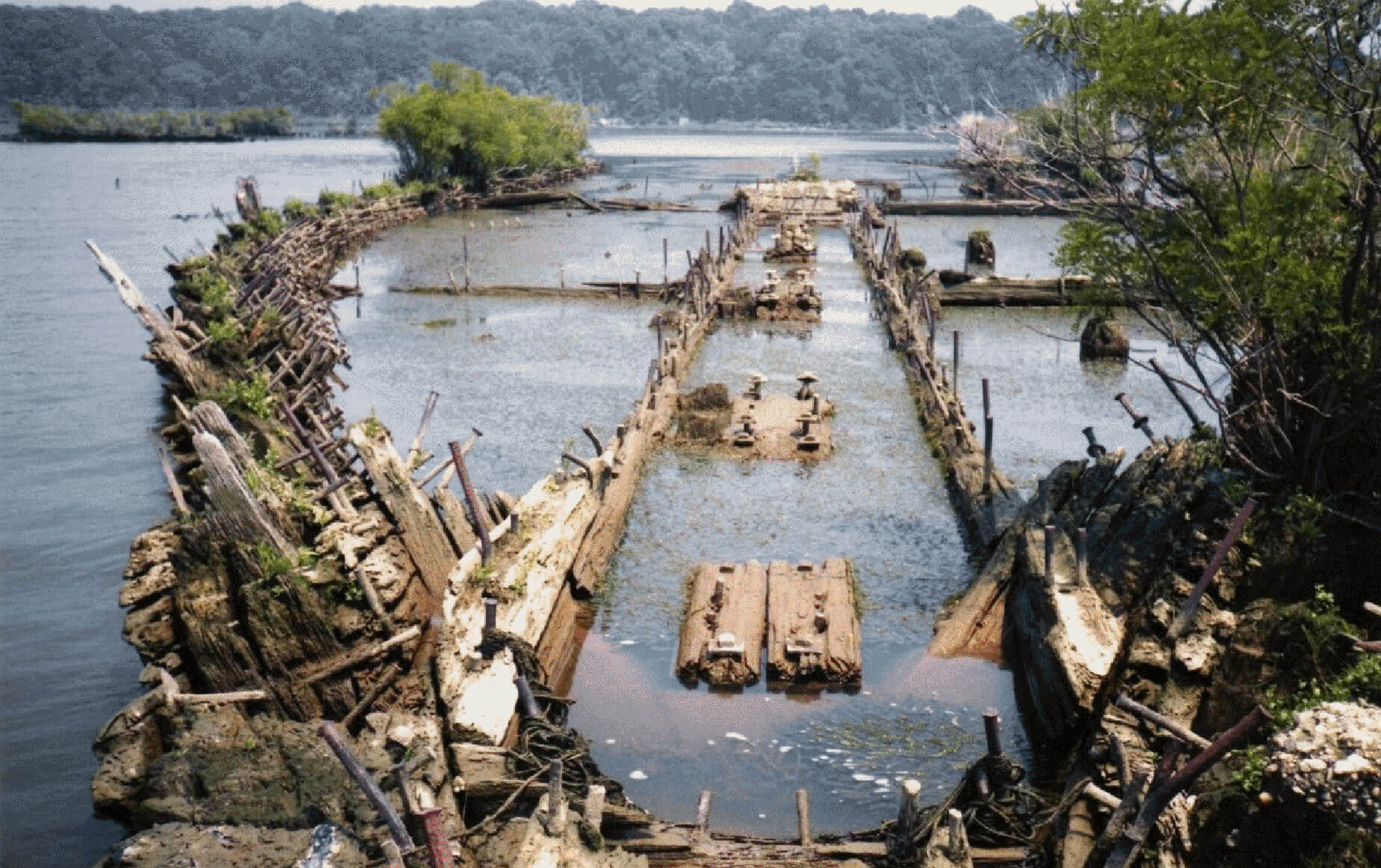
Mallows Bay-Potomac River National Marine Sanctuary protects and interprets the remnants of more than 100 World War I-era wooden steamships – known as the “Ghost Fleet”. Beyond the Ghost Fleet, the area’s history includes connections to the Revolutionary and Civil wars, as well as the rich heritage of commercial fishing operations, the Department of Defense, and three tribal nations.
Mallows Bay-Potomac River National Marine Sanctuary protects and interprets the remnants of more than 100 World War I-era wooden steamships – known as the “Ghost Fleet”. Beyond the Ghost Fleet, the area’s history includes connections to the Revolutionary and Civil wars, as well as the rich heritage of commercial fishing operations, the Department of Defense, and three tribal nations.
Sources:
Barney, Joshua. “Barge for Use in the Defense of Chesapeake Bay.” In The War of 1812: A Documentary History: Vol. II ed. William S. Dudley. Washington D.C.; Navel Historical Center, 1992, 375.
Barney, Joshua. “Captain Joshua Barney, Flotilla Service, to Louis Barney.” In The War of 1812: A Documentary History: Vol. III ed. Michael Crawford. Washington D.C.: Navel Historical Center, 2002, 123.
Barney, Joshua. “Joshua Barney’s Defense Proposal.” In The War of 1812: A Documentary History: Vol. III ed. William S. Dudley. Washington D.C.: Navel Historical Center, 1992, 373-6.
